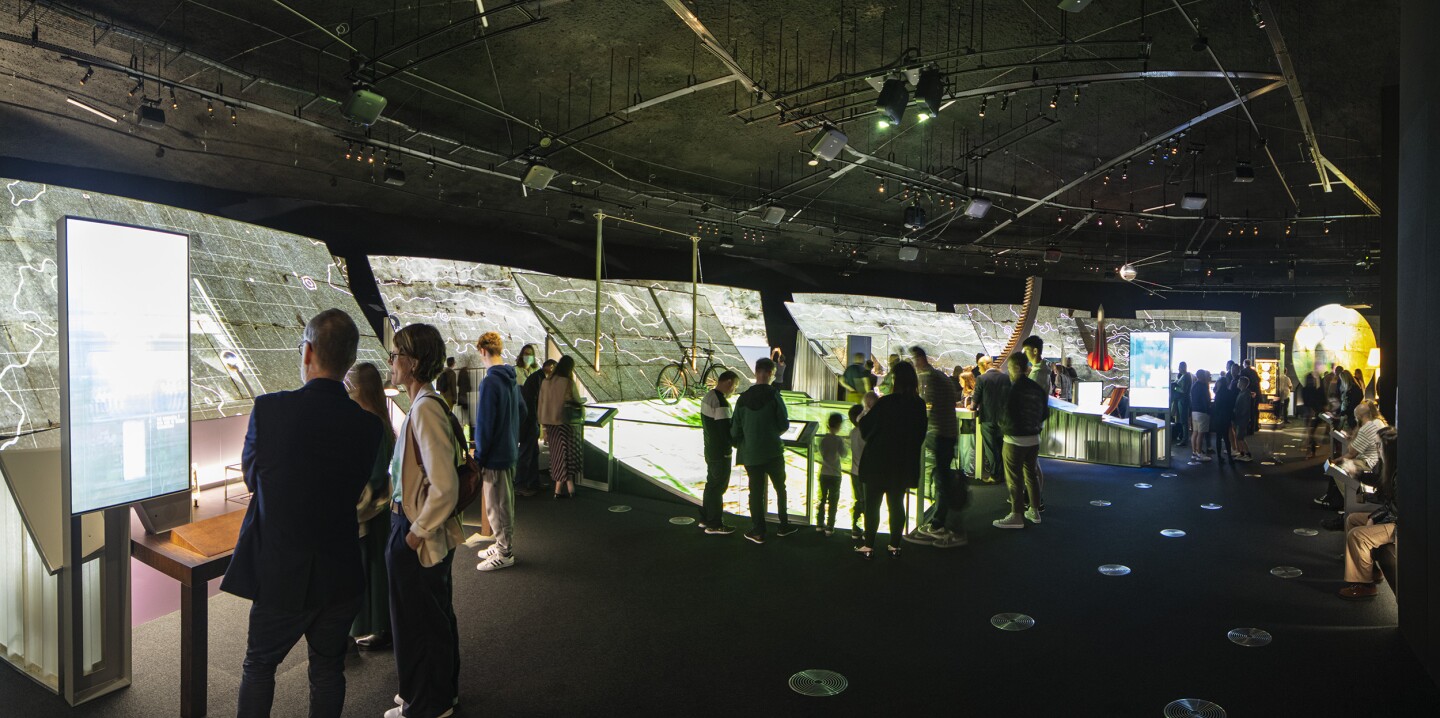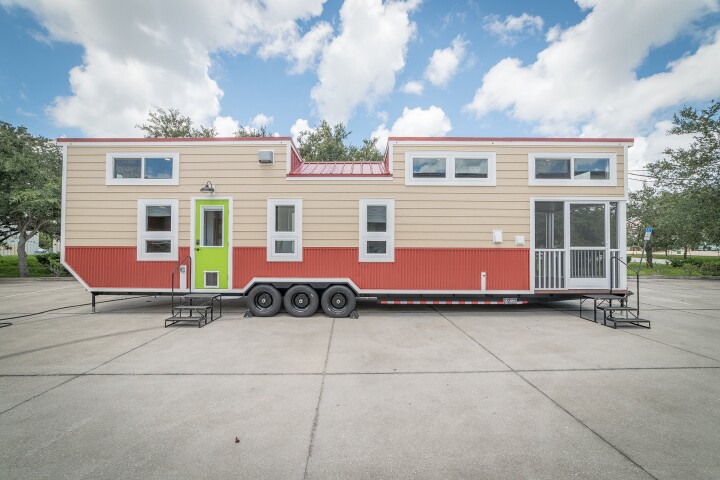Tasked with installing a visitor's center that doesn't dominate the landscape at Jodrell Bank astronomical observatory in England, architecture studio Hassell took the approach of burying it near the famous Lovell Telescope. The building – named the First Light Pavilion – is designed to match the same dimensions as the telescope's dish and in a nice touch, it even incorporates part of the original dish structure.
The First Light Pavilion is part of a wider redevelopment effort at Jodrell Bank, and is situated in the site's botanical garden. Its buried form means visitors can enjoy a stroll atop its grass-covered hill-like roof, and take in choice views of the surrounding landscape. Structurally, the building consists of a huge 76-m (almost 250-ft) concrete dome.
"The main structure of the First Light Pavilion is an in-situ concrete dome which is then buried beneath earth and seeded to appear as a 'hill' in the arboretum of the Observatory," explained construction firm Kier Group. "The delivery of this project included constructing the first concrete dome in the UK in over 25 years, and is one of the largest concrete domes in Europe."
Its entrance is one of the few parts of the building that is fully visible from outside, and draws visitors into a lobby area with a screen that curves to match the arc of the sun. A vertical window is cut into the wall here, allowing through a thin beam of sunlight that moves across the floor as the day passes, like a sundial.

Further inside is the exhibition space, which was handled by interior designer Casson Mann. It includes a series of interactive displays telling the story of the site, the history of radio astronomy and modern astrophysics, the dawn of the Space Age, and the creation of the Lovell Telescope itself. Nearby lies a 150-seat auditorium and a multimedia room that houses special exhibitions and caters for night-sky projections and educational lectures.
As the Lovell Telescope was undergoing a renovation around the same time as the project, Casson Mann managed to get its hands on 15 sections of the original 1957 dish's underside – the patinated panels now serve as a projection surface. In another subtle space-themed touch, the café and circular courtyard are arranged so that their orientation aligns to match when the Lovell Telescope was used to track Russia's Sputnik satellite on October 12, 1957 at 102 degrees from Azimuth.
Construction work on the project began in 2020 and it just recently opened. The budget was £21.5 million (roughly US$25 million).
Sources: Hassell, Jodrell Bank










